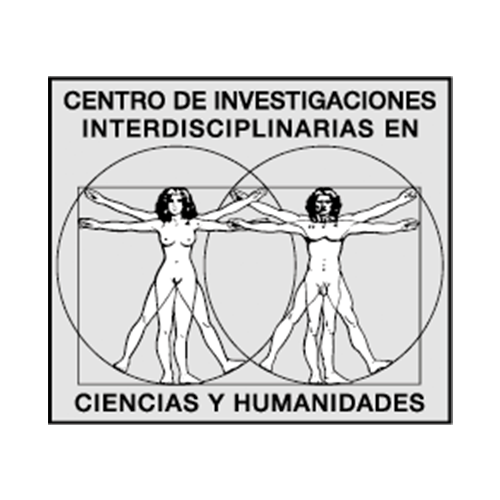Evaluando la toxicidad de nanomateriales en modelos celulares tridimensionales
Contenido principal del artículo
Resumen
Las evaluaciones in vitro para determinar el efecto citotóxico de los nanomateriales en cultivos celulares se han realizado de forma tradicional en cultivos bidimensionales. Esto se debe a que dichos protocolos se han adecuado a partir de aquellos utilizados en la toxicología. Sin embargo, las interacciones entre las células son mucho más complejas que las observadas en un arreglo en monocapa, siendo ésta la principal razón por la que, desde hace algunos años, se promueve la implementación de los cultivos celulares tridimensionales, a los que se les conoce como esferoides, para ser usados en las evaluaciones del efecto de los nanomateriales en cultivos celulares. Cada vez son más las evidencias que soportan la idea de que los esferoides representan un mejor modelo para el estudio de las respuestas celulares, pues emulan con mayor precisión las uniones celulares, comunicación y fisiología que sucede en un tejido dentro de un modelo in vivo. En este artículo, presentamos algunos puntos sobre el desarrollo de los cultivos 3D como una nueva y mejor metodología para las evaluaciones nanotoxicológicas.
Descargas
Detalles del artículo

Mundo Nano. Revista Interdisciplinaria en Nanociencias y Nanotecnología, editada por la Universidad Nacional Autónoma de México, se distribuye bajo una Licencia Creative Commons Atribución-NoComercial 4.0 Internacional.
Basada en una obra en http://www.mundonano.unam.mx.
Citas
Antoni, D., Burckel, H., Josset, E., Noel, G., Antoni, D., Burckel, H., Noel, G. (2015). Three-dimensional cell culture: A breakthrough in vivo. International Journal of Molecular Sciences, 16(12): 5517–5527. https://doi.org/10.3390/ijms16035517 DOI: https://doi.org/10.3390/ijms16035517
Belli, V., Guarnieri, D., Biondi, M., della Sala, F. y Netti, P. A. (2017). Dynamics of nanoparticle diffusion and uptake in three-dimensional cell cultures. Colloids and Surfaces B: Biointerfaces, 149: 7-15. https://doi.org/10.1016/j.colsurfb.2016.09.046 DOI: https://doi.org/10.1016/j.colsurfb.2016.09.046
Chia, S. L., Tay, C. Y., Setyawati, M. I. y Leong, D. T. (2015). Biomimicry 3D gastrointestinal spheroid platform for the assessment of toxicity and inflammatory effects of zinc oxide nanoparticles. Small, 11(6): 702-712. https://doi.org/10.1002/smll.201401915 DOI: https://doi.org/10.1002/smll.201401915
Djordjevic, B. y Lange, C. S. (1990). Clonogenicity of mammalian cells in hybrid spheroids: a new assay method. Radiation and Environmental Biophysics, 29(1): 31-46. http://www.ncbi.nlm.nih.gov/pubmed/2305028 DOI: https://doi.org/10.1007/BF01211233
Fey, S. J. y Wrzesinski, K. (2012). Determination of drug toxicity using 3D spheroids constructed from an immortal human hepatocyte cell line. Toxicological Sciences, 127(2): 403-411. https://doi.org/10.1093/toxsci/kfs122 DOI: https://doi.org/10.1093/toxsci/kfs122
Gagner, J. E., Shrivastava, S., Qian, X., Dordick, J. S. y Siegel, R. W. (2012). Engineering nanomaterials for biomedical applications requires understanding the nano-bio interface: A perspective. Journal of Physical Chemistry Letters, 3(21): 3149-3158. https://doi.org/10.1021/jz301253s DOI: https://doi.org/10.1021/jz301253s
Griffith, L. G. y Swartz, M. A. (2006). Capturing complex 3D tissue physiology in vitro. Nature Reviews Molecular Cell Biology, 7(3): 211-224. https://doi.org/10.1038/nrm1858 DOI: https://doi.org/10.1038/nrm1858
Huang, B. W. y Gao, J. Q. (2018,). Application of 3D cultured multicellular spheroid tumor models in tumor-targeted drug delivery system research. Journal of Controlled Release, enero 28; 270: 246-259. Elsevier B.V. https://doi.org/10.1016/j.jconrel.2017.12.005 DOI: https://doi.org/10.1016/j.jconrel.2017.12.005
Huang, K., Ma, H., Liu, J., Huo, S., Kumar, A., Wei, T., … Liang, X.-J. (2012). Size-dependent localization and penetration of ultrasmall gold nanoparticles in cancer cells, multicellular spheroids, and tumors in vivo. ACS Nano, 6(5): 4483-4493. https://doi.org/10.1021/nn301282m DOI: https://doi.org/10.1021/nn301282m
Hussain, S. M., Warheit, D. B., Ng, S. P., Comfort, K. K., Grabinski, C. M. y Braydich-Stolle, L. K. (2015). At the crossroads of nanotoxicology in vitro: Past achievements and current challenges. Toxicological Sciences, 25, septiembre. Oxford University Press. https://doi.org/10.1093/toxsci/kfv106 DOI: https://doi.org/10.1093/toxsci/kfv106
Jarockyte, G., Dapkute, D., Karabanovas, V., Daugmaudis, J. V., Ivanauskas, F. y Rotomskis, R. (2018). 3D cellular spheroids as tools for understanding carboxylated quantum dot behavior in tumors. Biochimica et Biophysica Acta - General Subjects, 1862(4): 914-923. https://doi.org/10.1016/j.bbagen.2017.12.014 DOI: https://doi.org/10.1016/j.bbagen.2017.12.014
Kapałczyńska, M., Kolenda, T., Przybyła, W., Zajączkowska, M., Teresiak, A., Filas, V., … Lamperska, K. (2018). 2D and 3D cell cultures – a comparison of different types of cancer cell cultures. Archives of Medical Science, 14(4): 910-919. https://doi.org/10.5114/aoms.2016.63743 DOI: https://doi.org/10.5114/aoms.2016.63743
Katifelis, H., Lyberopoulou, A., Mukha, I., Vityuk, N., Grodzyuk, G., Theodoropoulos, G. E., … Gazouli, M. (2018). Ag/Au bimetallic nanoparticles induce apoptosis in human cancer cell lines via P53, CASPASE-3 and BAX/BCL-2 pathways. Artificial Cells, Nanomedicine and Biotechnology, 46(sup3), S389-S398. https://doi.org/10.1080/21691401.2018.1495645 DOI: https://doi.org/10.1080/21691401.2018.1495645
Laschke, M. W. y Menger, M. D. (2016). Life is 3D: Boosting spheroid function for tissue engineering. Trends in Biotechnology, 35(2): 133-144. https://doi.org/10.1016/J.TIBTECH.2016.08.004 DOI: https://doi.org/10.1016/j.tibtech.2016.08.004
Laurent, S., Burtea, C., Thirifays, C., Häfeli, U. O. y Mahmoudi, M. (2012). Crucial ignored parameters on nanotoxicology: The importance of toxicity assay modifications and “cell vision.” PLoS ONE, 7(1): e29997. https://doi.org/10.1371/journal.pone.0029997 DOI: https://doi.org/10.1371/journal.pone.0029997
Lu, H. y Stenzel, M. H. (2018). Multicellular tumor spheroids (MCTS) as a 3D in vitro evaluation tool of nanoparticles. Small, 14(13): 1702858. https://doi.org/10.1002/smll.201702858 DOI: https://doi.org/10.1002/smll.201702858
Matsumoto, K., Saitoh, H., Doan, T. L. H., Shiro, A., Nakai, K., Komatsu, A., … Tamanoi, F. (2019). Destruction of tumor mass by gadolinium-loaded nanoparticles irradiated with monochromatic X-rays: Implications for the Auger therapy. Scientific Reports, 9(1). https://doi.org/10.1038/s41598-019-49978-1 DOI: https://doi.org/10.1038/s41598-019-49978-1
McElwain, D. L. S. y Pettet, G. J. (1993). Cell migration in multicell spheroids: Swimming against the tide. Bulletin of Mathematical Biology, 55(3): 655-674. https://doi.org/10.1007/BF02460655 DOI: https://doi.org/10.1016/S0092-8240(05)80244-7
Messner, S., Agarkova, I., Moritz, W. y Kelm, J. M. (2013). Multi-cell type human liver microtissues for hepatotoxicity testing. Archives of Toxicology, 87(1): 209-213. https://doi.org/10.1007/s00204-012-0968-2 DOI: https://doi.org/10.1007/s00204-012-0968-2
Mikhail, A. S., Eetezadi, S. y Allen, C. (2013). Multicellular tumor spheroids for evaluation of cytotoxicity and tumor growth inhibitory effects of nanomedicines in vitro: a comparison of docetaxel-loaded block copolymer micelles and Taxotere®. PloS One, 8(4): e62630. https://doi.org/10.1371/journal.pone.0062630 DOI: https://doi.org/10.1371/journal.pone.0062630
Nederman, T., Norling, B., Glimelius, B., Carlsson, J. y Brunk, U. (1984). Demonstration of an extracellular matrix in multicellular tumor spheroids. Cancer Research, 44(7): 3090-3097. http://www.ncbi.nlm.nih.gov/pubmed/6373002
Pampaloni, F. y Stelzer, E. (2010). Three-dimensional cell cultures in toxicology. Biotechnology & Genetic Engineering Reviews, 26: 117-138. http://www.ncbi.nlm.nih.gov/pubmed/21415878 DOI: https://doi.org/10.5661/bger-26-117
Pavlovich, E., Volkova, N., Yakymchuk, E., Perepelitsyna, O., Sydorenko, M. y Goltsev, A. (2017). In vitro study of influence of Au nanoparticles on HT29 and SPEV cell lines. Nanoscale Research Letters, 12. https://doi.org/10.1186/s11671-017-2264-9 DOI: https://doi.org/10.1186/s11671-017-2264-9
Pellen-Mussi, P., Tricot-Doleux, S., Neaime, C., Nerambourg, N., Cabello-Hurtado, F., Cordier, S., … Jeanne, S. (2018). Evaluation of functional SiO2 nanoparticles toxicity by a 3D culture model. Journal of Nanoscience and Nanotechnology, 18(5): 3148-3157. https://doi.org/10.1166/jnn.2018.14619 DOI: https://doi.org/10.1166/jnn.2018.14619
Sambale, F., Lavrentieva, A., Stahl, F., Blume, C., Stiesch, M., Kasper, C., … Scheper, T. (2015). Three dimensional spheroid cell culture for nanoparticle safety testing. Journal of Biotechnology, 205, 120–129. https://doi.org/10.1016/j.jbiotec.2015.01.001 DOI: https://doi.org/10.1016/j.jbiotec.2015.01.001
Sivaraman, A., Leach, J. K., Townsend, S., Iida, T., Hogan, B. J., Stolz, D. B., … Griffith, L. G. (2005). A microscale in vitro physiological model of the liver: predictive screens for drug metabolism and enzyme induction. Current Drug Metabolism, 6(6): 569-591. http://www.ncbi.nlm.nih.gov/pubmed/16379670 DOI: https://doi.org/10.2174/138920005774832632
Souza, W., Piperni, S. G., Laviola, P., Rossi, A. L., Rossi, M. I. D., Archanjo, B. S., … Ribeiro, A. R. (2019). The two faces of titanium dioxide nanoparticles bio-camouflage in 3D bone spheroids. Scientific Reports, 9(1): 9309. https://doi.org/10.1038/s41598-019-45797-6 DOI: https://doi.org/10.1038/s41598-019-45797-6
Sutherland, R. M., McCredie, J. A. e Inch, W. R. (1971). Growth of multicell spheroids in tissue culture as a model of nodular carcinomas. Journal of the National Cancer Institute, 46(1): 113-120. http://www.ncbi.nlm.nih.gov/pubmed/5101993
Tan, Y., Richards, D., Xu, R., Stewart-Clark, S., Mani, S. K., Borg, T. K., … Mei, Y. (2015). Silicon nanowire-induced maturation of cardiomyocytes derived from human induced pluripotent stem cells. Nano Letters, 15(5): 2765-2772. https://doi.org/10.1021/nl502227a DOI: https://doi.org/10.1021/nl502227a
Tchoryk, A., Taresco, V., Argent, R. H., Ashford, M., Gellert, P. R., Stolnik, S., … Garnett, M. C. (2019). Penetration and uptake of nanoparticles in 3D tumor spheroids. Bioconjugate Chemistry, 30(5): 1371-1384. https://doi.org/10.1021/acs.bioconjchem.9b00136 DOI: https://doi.org/10.1021/acs.bioconjchem.9b00136
Verjans, E.-T., Doijen, J., Luyten, W., Landuyt, B. y Schoofs, L. (2018). Three-dimensional cell culture models for anticancer drug screening: Worth the effort? Journal of Cellular Physiology, 233(4): 2993-3003. https://doi.org/10.1002/jcp.26052 DOI: https://doi.org/10.1002/jcp.26052
Vinci, M., Box, C. y Eccles, S. A. (2015). Three-dimensional (3D) tumor spheroid invasion assay. Journal of Visualized Experiments, 2015(99). https://doi.org/10.3791/52686
Weigelt, B., Ghajar, C. M. y Bissell, M. J. (2014 ). The need for complex 3D culture models to unravel novel pathways and identify accurate biomarkers in breast cancer. Advanced Drug Delivery Reviews, abril. https://doi.org/10.1016/j.addr.2014.01.001 DOI: https://doi.org/10.1016/j.addr.2014.01.001
Weiswald, L.-B., Bellet, D. y Dangles-Marie, V. (2015). Spherical cancer models in tumor biology. Neoplasia, 17(1): 1-15. https://doi.org/10.1016/J.NEO.2014.12.004 DOI: https://doi.org/10.1016/j.neo.2014.12.004
Xia, X., Monteiro-riviere, N. A. y Riviere, J. E. (2010). An index for characterization of nanomaterials in biological systems. Nature Nanotechnology, 5(agosto): 671-675. https://doi.org/10.1038/nnano.2010.164 DOI: https://doi.org/10.1038/nnano.2010.164
Yamaguchi, S., Kobayashi, H., Narita, T., Kanehira, K., Sonezaki, S., Kubota, Y., … Iwasaki, Y. (2010). Novel photodynamic therapy using water-dispersed TiO2-polyethylene glycol compound: evaluation of antitumor effect on glioma cells and spheroids in vitro. Photochemistry and Photobiology, 86(4): 964-971. https://doi.org/10.1111/j.1751-1097.2010.00742.x DOI: https://doi.org/10.1111/j.1751-1097.2010.00742.x
Yang, C.-C., Tseng, P.-H., Low, M. C., Hua, W.-H., Yu, J.-H., He, Y., … Kiang, Y.-W. (2018). Evaluations of cell uptake capabilities of gold nanoparticle and photosensitizer in a cell spheroid, (Conferencia de presentación). En X.-J. Liang, W. J. Parak y M. Osiński (eds.), Colloidal nanoparticles for biomedical applications XIII (vol. 10507: 27). SPIE. https://doi.org/10.1117/12.2287592 DOI: https://doi.org/10.1117/12.2287592
Zhdanov, V. P. (2019). Formation of a protein corona around nanoparticles. Current Opinion in Colloid and Interface Science, junio 1. Elsevier Ltd. https://doi.org/10.1016/j.cocis.2018.12.002 DOI: https://doi.org/10.1016/j.cocis.2018.12.002





